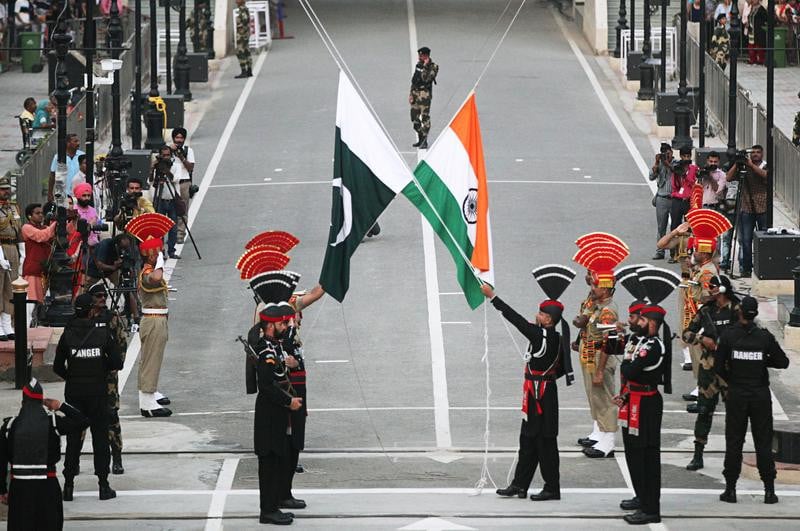
The Wagah Border, a symbolic site on Pakistan's eastern frontier where Muslim caravans entered the newly formed country in 1947, will not be open to the public for this year's Independence Day parade and flag-lowering ceremony due to ongoing renovation work at the Bab-e-Azadi (Gate of Freedom).
The Wagah Border, named after the last village on Pakistan's eastern border, became an international boundary on August 17, 1947, following the Radcliffe Boundary Award.
This location, which holds historical significance as the entry point for Muslim refugees from India, has seen the construction of the Bab-e-Azadi in memory of the great migration.
In February 2024, Punjab’s caretaker government initiated a project to renovate and expand the Bab-e-Azadi.
Due to this construction, this year’s Independence Day parade by the Pakistan Rangers Punjab and the flag-lowering ceremony will only be accessible to a limited number of guests.
The public has been informed of these restrictions through banners displayed at the site.
The Wagah Border, which has undergone significant changes over the past 77 years, originally featured a small checkpoint that has now evolved into a grand gate-like structure.
The Bab-e-Azadi features a prominent portrait of Quaid-e-Azam Muhammad Ali Jinnah facing India and walls depicting scenes from the 1947 migration.
The joint flag-lowering ceremony by the border forces of Pakistan and India, which began in 1959, continues to be a major attraction, drawing thousands of spectators each year.
However, this year, public access will be restricted due to the ongoing construction.
In 2017, the Wagah Border was the site where Pakistan’s largest national flag was hoisted by then-Army Chief General Qamar Javed Bajwa. The flag, which stands 400 feet tall, 120 feet wide, and 80 feet high, is visible from miles away.
The renovation project, which was approved by Punjab’s caretaker government in February, includes significant upgrades to the Bab-e-Azadi and surrounding facilities. The Bab-e-Azadi will be redesigned to resemble the Alamgiri Gate of Lahore’s Shahi Qila, and large LCD screens will be installed for better viewing of the parade.
The parade ground will be expanded to accommodate around 18,000 spectators, and the parking area will be enlarged. Once completed, the Bab-e-Azadi structure will reach a height of approximately 120 feet.





















COMMENTS
Comments are moderated and generally will be posted if they are on-topic and not abusive.
For more information, please see our Comments FAQ